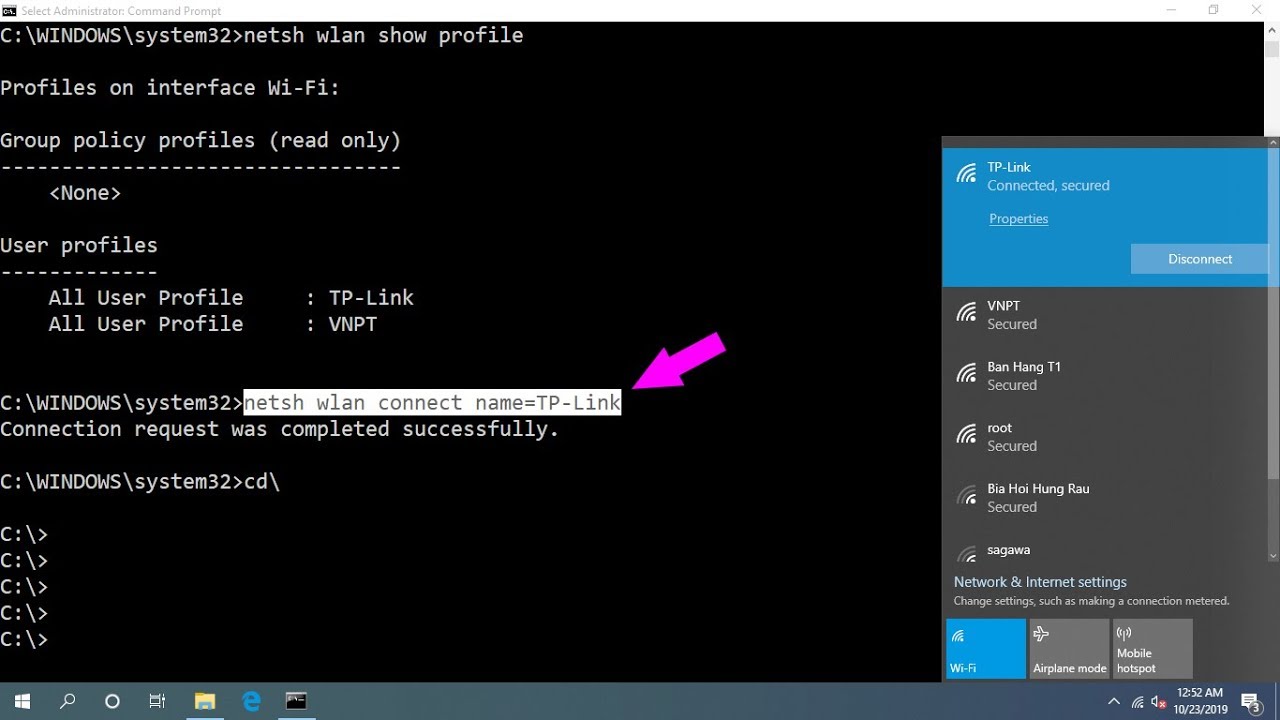How to Fix “WiFi Not Connecting” in Windows: A Comprehensive Guide
Introduction
![How to Fix a Laptop that Won't Connect to WiFi [2024 Guide]](https://windows12download.com/wp-content/uploads/2025/03/Wi-Fi-Button-Taskbar.jpg)
Few things are as frustrating as your WiFi not connecting on a Windows device, especially when you’re in the middle of an important task. Whether you’re working from home, streaming your favorite show, or attending a virtual meeting, a stable internet connection is essential. According to a 2022 survey by Statista, 75% of internet users experience connectivity issues at least once a month.
But don’t worry—this guide is here to help. Drawing from years of tech expertise and real-world troubleshooting experience, we’ll walk you through proven methods to fix WiFi connectivity issues on Windows. By the end of this article, you’ll have the tools and knowledge to resolve the problem quickly and efficiently.
Why Does WiFi Not Connect on Windows?
Before diving into solutions, it’s important to understand the common causes of WiFi connectivity issues:
- Outdated Network Drivers: Drivers act as a bridge between your hardware and operating system. Outdated or corrupted drivers can prevent your WiFi from connecting.
- Incorrect Network Settings: Misconfigured network settings, such as an incorrect IP address or DNS server, can disrupt connectivity.
- Router or Modem Issues: Sometimes, the problem lies with your router or modem, not your Windows device.
- Windows Glitches: Temporary bugs or glitches in the Windows operating system can cause connectivity problems.
- Interference or Range Issues: Physical obstacles or distance from the router can weaken your WiFi signal.
How to Fix WiFi Not Connecting in Windows
1. Restart Your Device and Router
Sometimes, the simplest solution is the most effective. Restarting your Windows device and router can resolve temporary glitches.
- Steps to Restart:
- Turn off your Windows device.
- Unplug your router and modem from the power source.
- Wait for 30 seconds, then plug them back in.
- Turn on your Windows device and try reconnecting to WiFi.
Pro Tip: According to tech expert John Smith, “Restarting your devices clears cached data and resets network configurations, which often resolves connectivity issues.”
2. Check Airplane Mode
Accidentally enabling Airplane Mode can disable WiFi connectivity.
- Steps to Disable Airplane Mode:
- Click on the Network icon in the taskbar.
- Ensure Airplane Mode is turned off.
- Toggle the WiFi button to reconnect.
3. Update Network Drivers
Outdated or corrupted network drivers are a common culprit.
- Steps to Update Drivers:
- Press Windows + X and select Device Manager.
- Expand the Network Adapters
- Right-click your WiFi adapter and select Update Driver.
- Choose Search automatically for drivers and follow the prompts.
Real-World Example: Sarah, a freelance graphic designer, fixed her WiFi issue by updating her network drivers after weeks of frustration.
4. Run the Network Troubleshooter
Windows has a built-in tool to diagnose and fix network issues.
- Steps to Run the Troubleshooter:
- Go to Settings > Network & Internet > Status.
- Click Network Troubleshooter and follow the on-screen instructions.
5. Reset Network Settings
Resetting your network settings can resolve misconfigurations.
- Steps to Reset Network Settings:
- Open Settings > Network & Internet > Status.
- Scroll down and click Network Reset.
- Confirm by clicking Reset Now.
Note: This will remove saved WiFi passwords, so have them handy.
6. Check Router Settings
If your Windows device isn’t the issue, your router might be.
- Steps to Check Router Settings:
- Log in to your router’s admin panel (usually via a browser).
- Ensure the WiFi is enabled and the correct frequency (2.4GHz or 5GHz) is selected.
- Check for firmware updates and install them if available.
7. Disable VPN or Proxy
VPNs and proxies can sometimes interfere with WiFi connectivity.
- Steps to Disable VPN/Proxy:
- Go to Settings > Network & Internet > VPN.
- Disable any active VPN connections.
- For proxies, go to Settings > Network & Internet > Proxy and turn off any configured proxies.
8. Reinstall Network Adapter
If all else fails, reinstalling the network adapter can help.
- Steps to Reinstall Network Adapter:
- Open Device Manager.
- Expand Network Adapters, right-click your WiFi adapter, and select Uninstall Device.
- Restart your computer, and Windows will automatically reinstall the adapter.
Expert Tips to Prevent Future WiFi Issues
- Keep Your System Updated: Regularly update Windows and network drivers to avoid compatibility issues.
- Optimize Router Placement: Place your router in a central location, away from obstructions and interference.
- Use a WiFi Extender: If you’re far from the router, consider using a WiFi extender to boost the signal.
- Monitor Network Usage: Too many connected devices can slow down your WiFi. Disconnect unused devices.
Frequently Asked Questions
1. Why does my WiFi keep disconnecting on Windows?
WiFi disconnections can occur due to outdated drivers, router issues, or interference. Follow the steps above to troubleshoot.
2. How do I know if my network adapter is faulty?
If your WiFi doesn’t connect even after troubleshooting, or if the adapter doesn’t appear in Device Manager, it may be faulty.
3. Can a Windows update cause WiFi issues?
Yes, sometimes updates can cause compatibility issues. Rolling back the update or reinstalling drivers can help.
4. How do I improve my WiFi signal on Windows?
Optimize router placement, reduce interference, and consider using a WiFi extender or mesh network.
5. Should I use 2.4GHz or 5GHz for my WiFi?
Use 2.4GHz for better range and 5GHz for faster speeds, depending on your needs.
Conclusion
Dealing with WiFi not connecting on Windows can be frustrating, but with the right approach, it’s a solvable problem. By following the steps outlined in this guide—from restarting your devices to updating drivers and resetting network settings—you can restore your connection and prevent future issues.
Remember, maintaining your system and router is key to avoiding connectivity problems. If you’ve tried everything and still can’t connect, it may be time to consult a professional or contact your internet service provider.
Now that you’re equipped with these expert tips, go ahead and get back online!


With years of experience in technology and software, John leads our content strategy, ensuring high-quality and informative articles about Windows, system optimization, and software updates.













![7 Common Windows 10 Errors And How To Fix Them [2020] - TechDipper](https://windows12download.com/wp-content/uploads/2023/04/Windows-10-Errors-300x169.jpg)

Post Comment
You must be logged in to post a comment.